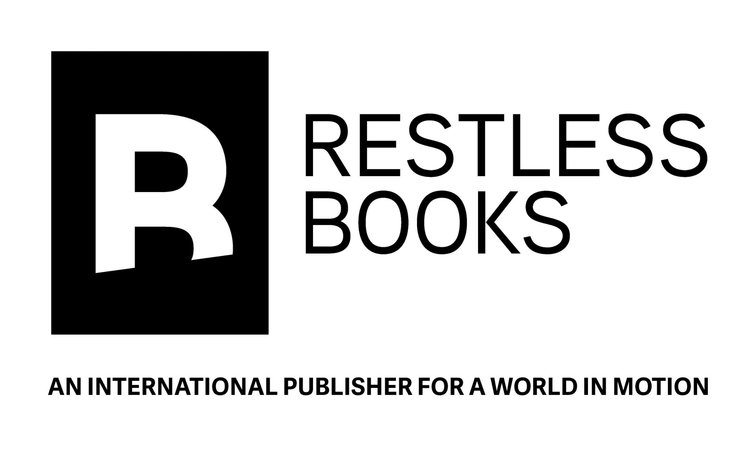What Nobody Told Me When I Signed Up to Be an Au Pair
By Ibeth Nore
The truth is that I was removed from the house like an object. I never recovered some of my personal belongings, not my phone, and just $59.00 I got paid after working over forty-five hours that week. My body was pushed in a car at 11:00 p.m., and my mind was blank. Where am I? Where are these guys taking me? The next stop was about half an hour from the house. The car was parked in a driveway. Am I going to die? What is this fucking guy doing? Carlos, Daven’s driver, got out of the truck and approached a woman. I realized that it was Carlos’s wife getting out of the door. She looked at me and got in another car and drove in a different direction. I wanted to jump out of the car. I pulled on the door handle. Shit, the door is locked. I was quiet, seated on a piece of metal. There were no seats in the back of the truck; it was just a narrow space between the driver’s and passenger’s seats and the back window. I fell asleep, and when I woke up, I was on a big highway. One lane, two lanes, three lanes, one car, two cars, five cars. It was dark, and the highway seemed familiar from the ride when I arrived in LA. In reality, I did not know my location, and I did not have any way to check. My eyes rested a little bit. I was extremely tired because I had worked many hours the night and day before. I was repeating in my mind: God protect me, guardian angel, take care of me. I cannot do anything. Why is this happening to me? Ibis breath, count until four. I do not know what to do. I was told that my flight to Colombia would leave at 7:00 a.m. from LAX. I asked Carlos, “Porque?” The host dad seated next to Carlos whispered something to him, and Carlos replied to me, “I cannot talk. Daven wants you to be quiet until we get to the airport.” We arrived at the airport, and Daven got out of the car and ran to talk to a woman. I looked through the window and I recognized Carlos’s wife. One day, during dinner at the house, I heard Maria talking to Daven about her job, and later I asked Kim about her, and Daven told me that she worked at the airport checking people through the security cameras. Porque el esta hablando con ella? Why is he talking to her? I wait until Carlos puts down all my bags and we walk to the entrance of departures. Daven said, “Maria is checking you through the camera, and she will make sure that you board the airplane and leave my country.”
Before working with Daven, I did not have a babysitter job. I did not have any experience changing diapers, cleaning bottles, or holding babies in my arms beyond helping my family members with their babies occasionally. I was an attorney in Colombia, my home country. I had the job that I dreamed of, working in a multinational corporation. My position did not require me to speak English because we had a bilingual lawyer. The company, AZTAFF, provided us with English classes at 7:30 a.m. before work started. One day, I made a mistake in a contract for five thousand dollars. I did not get fired, but that mistake triggered in me a desire to become bilingual, and one day be a senior attorney at AZTAFF.
English was always a difficult subject for me at school, and despite the classes that we took at work, it continued to be challenging because I spoke Spanish all day long. Casually, one day after work in Bogota, D.C., I passed my dear friend from high school, Paula, on the street. She told me that she was on vacation because she was studying and living in Denver with a host family. I asked her about her experience, and she was happy. She introduced me to the au pair program with the agency that she used to travel with. A couple of weeks passed, and then I made the mistake in the contract. That triggered in me Paula’s idea of study and work, and I immersed myself for a year in American culture to learn the language and return to work in a higher position. I knew that being bilingual would help me get a senior attorney position in AZTAFF, and that would also allow me to travel a lot.
I dialed the agency’s number. “Hello, this is Ibis. I would like to have information about the cost and the requirements for the au pair program in the United States of America.”
“Yes, it costs $2,500.” Okay, hmm, it doesn’t sound like much money if that would help me to learn English, travel, and study. I signed the contract to be an au pair, another word for babysitter. Weeks later, I paid and received the contract in my email that established the following: “Cultural Exchange program. The au pair will work for a maximum of twelve months, which could be extended for the same period one time. An au pair will work forty hours per week. The au pair will earn $195.00 per week. The family will provide food, room, a $500 bonus for the au pair to study, and one week of vacation per year. In the case that the au pair or the host family do not adapt to each other, the family can request a meeting with the au pair’s counselor to mediate the differences, and if the issues persist, the au pair could change families. Either party must contact the agency and seek a rematch. I agreed, paid, and the agency placed me on the website. Weeks later, I matched with a host family from Malibu, California. My English was poor. The only phrases I knew were: “Good morning, how are you?”, “I am from Colombia, I am a lawyer,” and my age and hobbies. The family, Kim and Daven, emailed me and wanted to have a Zoom meeting. They knew about my poor English, but they said it would be fine because Carlos, Daven’s driver, was at home most of the time. We scheduled the first meeting for Saturday, May 29, 2016.
I studied English before that meeting and learned questions to ask Kim and Daven about their life and the babies. On Saturday afternoon, I joined the meeting, and it was the family and Carlos. He translated the whole time, and I got to practice what I studied. It was a short meeting, and Daven said something that I did not understand. Then Carlos said, “Daven wants to know if you would like to have another meeting,” and I said yes. I continued working at AZTAFF, and after that meeting, I was against the wall. I had the dream job, but I wanted to be successful. I told Paula about Daven and Kim, and she said that her English had improved so much and that she had traveled with the family. Her last sentence was: “It was the best decision I could have made.”
Daven emailed me the link to the second meeting. I was more confident to speak a little, but my English was not enough to have a fluent conversation, and so Carlos translated for us again. After that meeting, I called my mom.
“Hola Ma, the family seemed nice, healthy, and I think I would be safe.”
Then, my mom said, “Mi amor, te amo. I am not sure about the decision that you are about to make in leaving the job that cost you a lot to find and following your dream to change diapers. I worked hard to send you to an excellent law school, and I don’t agree, but you have to follow your heart.”
OMG, my mama is making drama. “Ok Mama, te amo. Buenas noches.” I closed the call. The following week, I went to work, and that au pair experience and Paula’s last sentence were free rent in my head the whole week. On Friday night, I sat at my desk with a glass of wine, and I typed an email to Daven and Kim. “Hello host family, I hope everything is going well. I am emailing you to say that I accept the offer to be your au pair. Let me know if you are still interested. Regards, Ibis NP.” The next Monday, the agency emailed me that they would start the process to get my visa and that if it were approved, I would travel at the beginning of July. My visa was approved.
My life changed in the blink of an eye. I quit my job and arranged my trip. I flew from Colombia to New York. My boarding pass said “Seat 15A.” I got the window. I looked through the window when the airplane was taking off, and I saw how my life as a lawyer vanished with the clouds. But I was also excited for what was about to start. I arrived in New York at JFK. I walked to customs, said good afternoon, and smiled at the officer. He said, “Colombiana, si?” and I smiled again. Oh gracias a Dios, he speaks Spanish. “Porque visitar los Estados Unidos?”
I responded, “I travel as an au pair,” and I got the first stamp on my passport.
I enjoyed New York for a week while I was in training with other au pairs from around the world. I never thought New York would be my new home because I came with the goal to learn English and return to Colombia and the position that I had.
The next time I blinked my eyes, I woke up in Malibu, California. The attorney’s life was gone. I thought in that moment that an adventure was about to start, that I was smart, and that I would adjust easily. I was looking forward to this being one of the fun chapters of my life. The house that I was living in was a dream house with a magical view. I was able to see all the blues and greens of the ocean from the patio. I arrived to live in a fancy house with a pool and a family that I thought would treat me as a family member. Daven, a tall black guy with a nice smile, picked me up at the airport and said, “Welcome to Cali.” The next words were in the car on our ride to the house that would host me for the next twelve months. He said, “Kim is in la casa with the babies.” I said okay. In the week that I was in training, I learned a lot of words and sentences, but I was quiet most of the time. He asked me how New York was, and I said that I loved it, that I had a great time. I wanted to talk with him, but I did not know how to combine the words and put together the sentences. In my English, I said to him, “I am muy Feliz to be here and write a new chapter of my life with your babies.” It was my first time out of my country, so everything was new for me. He drove fast in his fancy car, and after an hour or two, I was not sure about the time, and was confused because my watch said 5:00 p.m., but his car said 2:00 p.m. My biological clock and my brain were on different times. We got to the house, and Kim and her babies welcomed me.
She smiled and said, “Hola, bienvenida a mi casa.” I extended my hand to greet her, and I got on my knees to greet the twins, Kisz and Kasz.
“Hola ternuritas, we are going to have fun together,” I said to them in Spanish. She showed me my room and my bathroom. The first impression I had of Daven and Kim was that she was older than he was. They were not affectionate, like Colombian couples. For example, he did not kiss her when we got to the house. But I could be confused because they spoke fast, and I did not understand them. Daven asked if I was hungry, and I nodded my head. Then, after lunch, I went to change my clothes. I wore sandals and shorts, and everything matched. It was really hot. They took me to my first Mexican restaurant. He said, “Order whatever you want.” The menu was in Spanish. I chose the simple taco de pollo. While in the restaurant, we did not communicate much due to the language barrier. We returned home, I showered, and they said that I should sleep so I would be ready to start working the following day.
The next morning, I opened my eyes at 6:00 a.m. I ran to the shower, and from the beginning, I always changed my clothes in the bathroom, as I thought that Kim may feel jealous. I tried to always be in contact with her to avoid conflicts. At 7:00 a.m., it was breezy, and Devan got out of the room and saw me seated on the patio. He brought one of the babies, but I found it difficult to identify him at the beginning. I held him in my arms, and Daven said that I could get anything from the fridge to cook my breakfast. I said thank you. I put the baby in his chair, and I fried two eggs with a cup of coffee. OMG, this is not coffee. I ate, and Kim showed up in the kitchen. I greeted her, and she put the baby in my arms. This woman does not realize that I am eating. “Hola bebe,” I said, and I ate whatever was left on my plate.
Some time passed, and Daven said, “My amigo Carlos, a driver, is Mexican and will come later to translate your schedule for you and explain everything. I said okay.
It was around 10:00 or 11:00 a.m. when two people entered the house and introduced themselves. “Hola, bienvenida a Malibu; mi esposa, Maria y yo soy Carlos el conductor y ayudante de Daven.”
I said, “Hola, mucho gusto, Ibis.” Carlos, his wife, Daven, Kim, the twins, and I sat at the kitchen table on the patio with a view of the ocean. At that moment, I thought how lucky I was, that this was the house of my dreams, and I loved the view. Carlos translated my schedule from 7:00 a.m. to 7:00 p.m. But there are too many hours per day. Okay, Ibis, breathe, continue listening. “The hours that the twins are sleeping, you can do laundry, clean their bottles, and organize their room. In the morning:
7:00 a.m.: change diapers and put on new clothes.
Give them 4 ounces of Kim’s milk that is frozen in the fridge.
8:30 a.m.: play with them in the gym.
9:30 a.m.: change diapers, feed them, and change them for a nap.
1:30 p.m.: change their diapers, feed them, clean their bottles, read a book in Spanish, and teach them songs in Spanish.
3:00 p.m.: nap time until 5:00 or 5:30 p.m. Between that, help Kim with anything that is needed for the kids.
5:30 p.m., wake them up and change their diapers. After dinner time, go for a walk and bathe them. From 7:00 to 7:30, you will be free. Oh, something important: Daven will travel to Africa for two weeks in a couple of weeks, so Kim will need your help, and it will just be you and her. I can come if you need me, or Kim will call me to translate anything in case you do not understand.”
Carlos asked me, “¿Tienes alguna pregunta?” – Do you have a question? I have a lot. When am I going to study? When the babies are asleep, I have chores, too. I said, “Yes, when are my days off? And no, I do not have more questions.” I must talk to Erika; this seems a lot for just $195.00 per week, and Daven is going away, leaving just the two of us. Daven was a key part of the house because he always cooked and helped me with the kids because Kasz and Kisz sometimes cried, and of course, I could not change the diapers or hold them at the same time. So, Daven helped me most of the time while Kim was sleeping in front of the computer during meetings. She was a senior blah blah blah in Bank of CAAC.
Erika was the counselor that the agency assigned me. She went to the house and took me to the beach, and in a soft way explained to me what Carlos said–that the host family paid for me. I paid, too, to be here. What are you talking about? She convinced me to help them and added that she would talk to them to give me time to study.
It was August 13. My routine started at 7:00 a.m., and I planned to work until 6:00 p.m. and go for my evening walk along the beach. During the day, I changed diapers and burped the twins. We did our gym routine, and by 10:00 a.m., they were ready to take a nap. While they napped, I did laundry, cooked my lunch, and of course, I was kind, and why not make extra to share with Kim, so she can just sit and feed the twins when they wake up? I folded everyone’s clothes. I was like a robot; I never thought I had all these abilities.
I was next to the pool, enjoying the ocean view and eating my lunch at 1:00 p.m. when Kim called me.
“Yes, Ibis, could you help me burp Kasz?”
“Yes, I am finishing my lunch.” OMG, how useless could this woman be that she cannot burp them by herself? I stuffed myself with the rest of my lunch, and the night routine started again. Kim went to sleep, and I was with the twins until 4:00 p.m. At 4:30 pm, the twins got up, and we took them for a walk. Everything appeared to be nice and happy. Kim even thanked me for cooking while Daven was away. We went to the beach and took selfies. Kim and I went back to bathe the twins, and everything was running smoothly until the door creaked.
“Hola, buenas noches,” Daven said.
I answered back, “How was your trip?” he smiled and said it was great, that Africa was amazing.
The twins were getting ready for bed, and suddenly Kasz started crying, “Wah wah wah wah wah!” like never before. I got worried and approached Daven. Kasz was in Daven’s arms, and I started singing the duck song, “Cuak cuak cuak.” I made up that song for them to help them relax when they cried. Daven and Kim were talking. Kim was in the kitchen cooking something for him, and unexpectedly, Daven yelled at me and sent me to my room. I blushed because I did not understand what was happening. I went to the room, and I called my mom and my dad.
“Hola mami, como estas?” My mom said she was at work and busy. I had to tell her that I did not know what happened.
She said, “Talk to me.”
“Mami, el bebe empezo a llorar cuando estaba en los brazos de Daven y el me envio a mi cuarto gritando. Estoy asustada-” I am scared. Mom said to get into my pajamas and go to sleep. Tomorrow would be a better day. He must be tired. I followed my mom’s advice. I was in bed when Daven knocked on the door and asked me to go to the kitchen. We talked in English. I learned a lot while he was traveling. I studied a lot of verbs and practiced them with Kim.
Daven said, “Kim just told me that you have not been helping her as you’re supposed to.” She is lying, she takes the twins at 7:00 a.m. and goes back to sleep, and I have been working with them until 10:00 or 11:00 p.m. I told him that that was not the truth, and I listed all of the things that I did. I did my job, I cooked, folded her clothes, cleaned the kitchen, and helped her until 10:00 or 11:00 p.m. because it was the last bottle for the babies, and I received them at 7:00 a.m. Carlos entered the house, and he started translating for me. I repeated to him what I had tried to say before to Daven. Kim was in the kitchen, crying and talking fast, but I was not able to understand. I was under pressure, and Carlos was not translating for me.
I said that it was a mistake, that it was not true, and that she was lying. I asked Carlos to tell them that I would step out to call my counselor. I walked to the front door of the house. I was in pajamas, and it was chilly. I pressed her number, 714-900-8400.
“Hola Erika, como estas es Ibeth, hay una situacion en la casa y el Host Dad is yelling at me and would like you to come.”
Erika said, “Ibeth, I am far, and I can’t go, but I will call the family in the morning and drive to the house.”
“No Erika, el ha estado golpeando el meson de la cocina y gritando estoy muy asustada. He has been hitting and shouting in the kitchen, I am scared.”
Erika replied, “Don’t worry, go to sleep.”
I also called my friend Paula, who was in Denver on vacation. She said, “Go to your room, pray, and sleep.” I walked back to my room; I went under the blankets, and I was praying when I heard BOM BOM BOM on my door.
Shaking, I said, “Yes?”
Daven said, “Open the door.”
I said, “I’m in pajamas.”
“Open the door.”
I said, “I am sick, could we please talk in the morning?” No reply, then Carlos knocked on the door.
“Ibis, open the door.” I said the same thing. My heart was beating fast.
“Carlos, por favor, dile que quiero dormir y que hablamos en la manana. Carlos, please tell him that I want to sleep. I have a bad headache, and we can talk in the morning.” I thought Daven had accepted this, and I went back to bed.
I was under the covers when I heard someone trying to open the door with something, and he was yelling at Kim to bring a knife. I was shaking. I did not know what to do. I was wearing sweatpants and a sweater. I tried to call Erika, and the phone rang, but she never picked up. I tried again, another time. I called Paula, but it was 11:00 p.m. and no one answered the phone. A drill was opening my door. Daven opened the door. He gave me ten minutes to leave his house. What is happening? I wanted to call the police, and he grabbed my arm and threw my phone away. He got furious, he packed my bags in minutes, pushed me out of the house, and brought me to the truck.
I was in the truck for around five hours, driving and driving around LAX. We got to the airport.
“Good morning, Sir. Where are you flying?”
“She is flying, she does not speak English, and here are her documents.” This is my opportunity to recover my file with all my documents. I said hi to the woman and jumped on Daven’s hands and slapped my purple file. Carlos dijo-said,
“No hagas nada tonto que y ate vas a tu casa. Do not do anything stupid as you are going home.” I want to tell this woman everything I have been through, but I do not know how.
The woman said, "Welcome." I got my passport, my bags, and Carlos’s wife, who worked at the airport, showed up, and she said she would make sure I boarded the flight. I walked to the gate, and I saw Carlos and his wife walking behind me. I boarded the flight, and at the last minute, Carlos came to sit next to me. I asked, “Por que? I did everything and more. I asked him to let me call my family and tell them, but he did not allow me.” After some time in the air, we landed in Dallas, TX. I got out of the airplane and said to Carlos that I had to use the bathroom. I ran with my bags, and I asked a woman in the restroom to let me borrow her phone to make a call to Paula. My English by then was better, and in a couple sentences, I told her that I had lost my phone, and I had to make a call to my friend Paula. Thank God she let me.
I was shaking. I dialed Paula’s number, but she did not pick up the phone. I called again but heard: “This is Paula, I cannot answer. Leave your message.”
“Paula, I’m in Dallas. The Host Dad kicked me out of the house. I do not have a phone or computer. He took everything from me, and I don’t have any money. Please help me, I am at the Dallas airport.”
Carlos entered the restroom. “Everything ok?”
“Si, estoy bien.” He walked me out of the restroom, and I walked to the gate to wait for my flight. I asked Carlos why Daven acted like that. I did not understand.
Carlos said, “Kim told him that while he was in Africa, you did not help her and she could not sleep properly, and that was the reason why she was short on milk.”
I said, “Eso no es verdad.” I said, “Why did you not tell him all that you saw me doing?” During Daven’s trip, Carlos was at home a couple of times to check how everything was, and one time to translate for Kim that she wanted me to work until 10:00 p.m.
He said, “She is also my boss, and I was just interpreting for her. I cannot say anything.” Fuck you, asshole, pendejo. You are an immigrant, too, and life will pass the check later. Suddenly, I heard my name: “Ibis Noraas, we are looking for you. Do not move.” Carlos heard my name too, and he got up and commenced to walk away when ten officers started walking toward us. The officer, Martinez, introduced himself.
He said, “We received a call, and the person told us that you are in danger. What happened?” I collapsed in tears. I could not talk, and I had a node in my throat. The officer gave me water, and after a few minutes, I was able to tell them what happened. I pointed at Carlos, who stood far away from me and the police. An officer made him approach us, and they asked him if he was with me. He said yes, and Martinez asked him to step away from me and walk with him, but I did not even look to see where they took him. Martinez let me borrow his phone to call my friend Paula, and we called the agency that was located in L.A. where she worked. She had called the police and her cousin, who is a pilot, and by miracle he was there that day in Dallas. Thanks to them, the officer located me.
The officer advised that I should fly home, and that I would be safe there. I flew back to Colombia. The au pair agency in California said that the host dad had complained about my English. I countered that argument because they knew from the beginning. Cintia, the manager, said that no money would be given back, but if I wanted, my profile would be placed on the website again. I did not doubt it because I had not completed my goal, which was to become bilingual. After many emails and meetings between the agency and me, the agency finally agreed to publish my profile.
Some months later, I matched with another family, Holy, and it was a negative situation as well. I was with that family for seven months. My host mom asked me to leave again because I wanted to study, and I was not helping her on the weekends. I left for another family, Toure, and it was also a negative experience. Finally, I decided to go back to Colombia, and sought an F-1 Visa. My second visa got approved, and I moved again to the United States as an international student.









